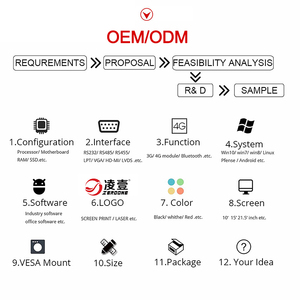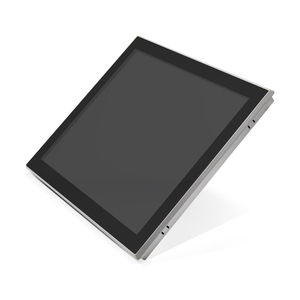(1053 products available)




































































































































































































The Intel i5 7500u has gained a reputation for delivering excellent performance while keeping power consumption low. This Intel Core i5 7500u processor benchmarks show that it's efficient enough to be used by ultra-thin laptops like the 2-in-1 models on the market today. Despite having two cores, many have found the dual core 7500u good enough to run various tasks simultaneously without crashing or slowing down.
The relevance of the letter attached to a processor's model number cannot be underestimated; it helps consumers get the right one. The letter indicates the kind of processor, while the number shows the generation. An Intel Core i5 7500 processor has four cores, while an i5 7500r has a robust, resilient feature set to withstand severe conditions.
Learning about the different i5 processor types is essential. Since the i5 series started in 2009, several families have emerged:
The Intel Core i5 7500u is a dual-core, energy-efficient mobile processor fitted in ultrabooks and sleek laptops. Its benchmark reveals impressive capabilities in providing quality and smooth output in entertainment, productivity, and multitasking functions. One of its key features, hyper-threading, enables each core to function as two separate cores, thus, handling four threads simultaneously. As a result, there is an improved performance and efficiency in resource-heavy tasks such as media editing and gaming. The way the i5 7500u is built makes single-threaded programs run faster, and those with many threads use 50% less energy than other processors.
The processor's speed increases to 3.6 ghz with turbo boost frequency, which is quite fast when running performance-based programs. Moreover, the offset engine clock is customizable from 0.0 to 1.0 ghz, while the base frequency is 2.5 ghz. The 4 mb smart cache provides adequate storage for swift data transition between the CPU and its cores. The i5 7500u processor is designed to handle light multitasking activities like document editing while maintaining system responsiveness and maximizing energy efficiency.
The thermal maximum is between 35 and 60 degrees celsius, and the maximum temperature for the system is 100 degrees centigrade. Applications can be installed in embedded systems since the i5 7500u can operate within these ranges. The processor supports a maximum of 64 gb data. In case there is a need for more memory, users can opt for the core i7 processors.
The Intel i5 7500u has integrated graphics (HD graphics 620) and an average graphic base frequency of 1.0 ghz. It also benefits end users engaging in light gaming, viewing media, and performing other graphic tasks. Since there is no separate graphic memory, using the memory attached to the motherboard is what integrated graphics entails. However, it is important to note that integrated graphics are not suitable for professional-level, highly intensive graphic tasks. The model's maximum memory bandwidth is 12.8 gb/sec, and the maximum resolution for display port is 4096 x 2160 at 60hz. For the hdmi, the maximum resolution is 1920 x 120 at 60hz.
The Intel Core i5 7500u can be useful to various types of consumers and organizations. Here are some important uses and applications of the low-power 7th Gen i5 processor.
Target Audience and Purpose:
Determining the buyer's target audience and purpose is crucial. Analyze what type of customers the target store serves. Be sure to know the primary purpose of customer use such as gaming, graphic design, or regular office tasks. This will influence the choice of processor, as some are better suited for specific tasks than others.
Performance Needs:
The i5 7500u processors are designed for different computing needs. Take time to understand the meaning of the letters and numbers. The ""i"" indicates a core processor, while the numbers following the ""i,"" indicate the series or performance level. The numbers after the dash represent the specific model. Sellers should ensure they choose one that meets the performance needs of their consumers.
Graphics Capabilities:
All Core i7 processors come with integrated graphics, allowing them to display images on a monitor without needing a separate graphics card, even if the model has no separate graphics card. Integrated graphics enable a computer to output video to a monitor, deeming them useful for simple tasks. Choosing a model with adequate graphics capabilities for its buyer's use is essential.
Power Consumption:
Kernel i5 processors come in different power consumption models, denoted by a TDP or thermal design power. The lower the TDP, the less power the processor uses. Choosing one with the right power consumption level is important. Processors with lower power consumption levels are well-suited for portable and battery-powered devices, while those with higher power are more commonly used in stationary PCs.
Memory and Storage:
Memory and storage play important roles in a computer's performance. The i5 7500u laptop with higher RAM memory can open more applications at the same time. Storage type and size, on the other hand, determine how fast programs and files load. SSD storage is far faster than HDD, deeming it a popular choice amongst users. Sellers looking to provide customers with a faster and smoother system experience will do well to choose the i5 7500u model paired with ample SSD storage.
Q1. How many threads does the i5 7500 have?
A1. The Intel Core i5-7500 has 4 threads.
Q2. Is the i5 7500 a good processor?
A2. The i5 7500 offers moderate performance for everyday tasks like web browsing, office programs, and light gaming. For computers, it is an affordable option.
Q3. What does the 7500 mean in i5 7500?
A3. The 7500 denotes the model number of the processor. It helps to identify its specifications and performance level.
Q4. How old is the i5 7500?
A4. The Intel Core i5-7500 CPU was released in early 2017.